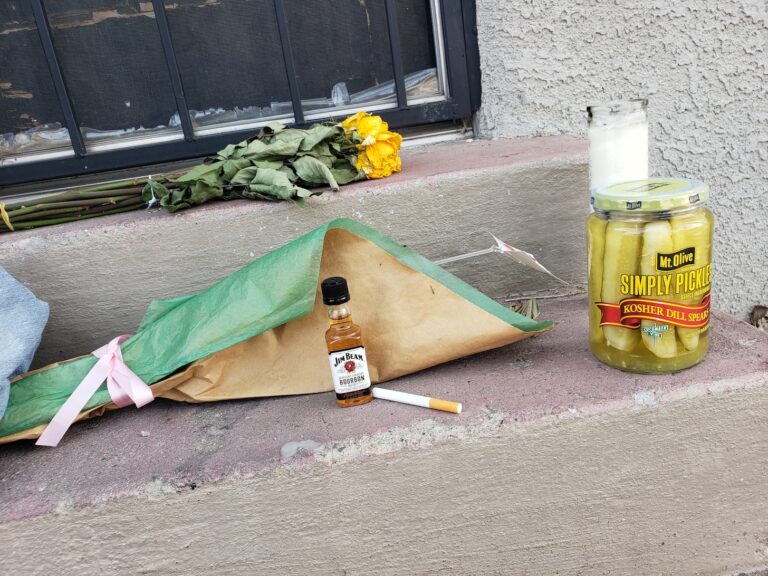The opinions expressed are solely those of the author. E-mail jerry@alibi.com.
Latest Article|September 3, 2020|Free
::Making Grown Men Cry Since 1992
5 min read
One-time presidential candidate Hubert Humphrey was fond of pointing out that the truest measure of a society’s success should be not how its wealthiest citizens fare but how that society provides for its neediest: the poor, the elderly, the infirm and the children. That’s a wonderful perspective to keep as we watch Albuquerque become one of “America’s hottest cities” in the enthusiastically boostering language of our morning daily. Weekly, we have evidence thrust at us that we have (at last) become an outpost on the national growth frontier. New construction continues to surge. Land values are soaring. Businesses that will cater to (and tap for their work force) the “creative classes” are popping up all over. Our town is looking spiffier and more prosperous every day. The wheels of commerce are humming along in pace with our bright and popular new Rail Runner commuter trains, our ever-busier airport and our rebuilt interstates.But you have to look a lot harder (and mostly unsuccessfully) to find any evidence that we are matching that economic boom with a similar improvement in how we are responding to our neediest citizens.So it was with great interest that I heard about the proposal developed by City Councilor Debbie O’Malley for a major affordable housing initiative which is up for Council discussion and possibly action this week. Her proposal relies heavily on the land trust concept that was introduced to Albuquerque through the Sawmill Community Land Trust, which continues to provide access to home ownership for low-income Albuquerqueans.The two main affordable housing developers in town, United South Broadway (USB) and the Greater Albuquerque Affordable Housing Program (GAAHP) are both kicking off significant new construction projects aimed at expanding the number of units available for home ownership by low-income families.USB’s “Broadway Vistas” town homes and “Back to Broadway” scattered site individual family units are designed to provide young families with attractive (yet affordable) means to remain in their traditional neighborhoods, a much more desirable option than one of the West Mesa subdivisions.Broadway Vistas will break ground this month. By early 2007, 20 families will move into new town homes on the 3 / 4 -acre lot at Hazeldine and Broadway. Prices will range from $112,000 for the studio units to $187,000 for two-bedroom units. Like Broadway Vistas, GAAHP’s project across from the railyards on South Second will be mixed-income, blending market-rate units with affordable ones. Simultaneously, the Homeless Advocacy Coalition is preparing to renovate a large number of rental units into transitional housing for previously homeless families and individuals, and the Barelas Community Development Corporation has plans afoot to construct several dozen new units of infill housing in that economically depressed community just south of the rapidly gentrifying Downtown.So there are some stirrings at that end of the market. The question is, will all that ferment around affordable housing keep pace with the number of housing units lost (bulldozed, converted to law offices, made into parking lots or gentrified out of the reach of the burgeoning number of our needy), let alone make any headway cutting into the problem?O’Malley’s proposal is a welcome one. She is drawing attention to a huge boil on our civic backside, and her success with the land trust concept at Sawmill is certainly an indication that the concept should be one of the roads we utilize in expanding access to home ownership. At the same time, I think we need a full array of approaches, not just that of a land trust.There are some limitations to the land trust concept. The very aspect of it that makes it so valuable for some families (guaranteed affordability preserved by separating ownership of the home from ownership of the land on which the home rests) also means the part of home ownership that many in the middle class have used to climb up the economic ladder (the accumulation of equity, the building of wealth) will happen more slowly for land trust property owners.A major piece of the city’s arsenal of affordable programs definitely should be a land trust. But similar commitments to projects like the other ones mentioned above should also be maintained—actually, expanded. Affordability in housing is a function of land prices (mostly) and construction and design economies (to a lesser degree). Aside from the land trust (which controls land costs by pooling and retaining its ownership in common), the main way affordability has been provided in the past has been through public subsidy, either by making land available at bargain rates or by using “soft second mortgages” held by the city (or some other governmental entity) to bring the down payments within reach. Those all have advantages and disadvantages. The point is, the full array is what is needed: more rental units, more scattered site infill units, more land trusts, more design innovations, more creative financing and public subsidy. Housing advocates like USB’s Diana Dorn Jones and Margy Hernandez have long emphasized that the answer to Westside sprawl does not have to be either public housing projects or upscale lofts. We need projects like theirs, and we need O’Malley’s land trust if we are to respond effectively. Unless we are prepared to see the number of homeless or inadequately housed people climb, we need to get serious about expanding affordable housing.






